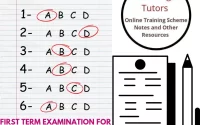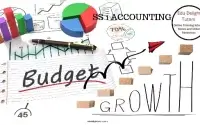Understanding Physical and Chemical Changes in Chemistry – SS 1 Chemistry Lesson Chemistry SS 1 First Term Lesson Notes Week 3
Chemistry SS 1 First Term Lesson Notes – Week 3
Subject: Chemistry
Class: SS 1
Term: First Term
Week: 3
Age: 14-16 years
Topic: Particulate Nature of Matter I
Sub-Topic: (1) Physical and Chemical Changes, (2) Elements, Compounds, and Mixtures, (3) Atoms and Molecules
Duration: 40 minutes
Behavioral Objectives:
By the end of the lesson, students should be able to:
- Define physical and chemical changes.
- Differentiate between physical and chemical changes based on characteristics.
- Define elements, compounds, and mixtures.
- Explain the terms atoms and molecules.
Keywords: Physical change, chemical change, element, compound, mixture, atom, molecule.
Set Induction:
Discuss examples of everyday substances (e.g., water, salt, sugar) and ask students if these can change form or composition under certain conditions.
Entry Behavior:
Familiarity with basic substances around them and knowledge of simple changes like melting ice.
Learning Resources and Materials:
- Pictures showing physical and chemical changes
- Samples of elements, compounds, and mixtures (e.g., water, salt, iron, air)
Building Background/Connection to Prior Knowledge:
Ask students to describe changes they have observed in daily life, such as ice melting or paper burning.
Embedded Core Skills:
- Critical thinking
- Observation
- Classification
Learning Materials:
- Lagos State Scheme of Work
- Standard Chemistry Textbooks
Instructional Materials:
- Whiteboard/Markers
- Sample materials for demonstration (e.g., ice, salt, sugar)
Content
Physical and Chemical Changes
- Physical Change: A change that affects the form of a substance but not its chemical composition. Examples: melting, freezing, dissolving.
- Chemical Change: A change that results in the formation of a new substance with different properties. Examples: rusting, burning, digestion.
Characteristics of Physical and Chemical Changes
- Physical Changes are usually reversible, do not create new substances, and do not change the molecular composition.
- Chemical Changes are often irreversible, result in new substances, and alter the molecular structure.
Elements, Compounds, and Mixtures
- Element: A pure substance consisting of only one type of atom, such as oxygen or gold.
- Compound: A substance formed when two or more elements chemically combine in fixed proportions, such as water (H₂O).
- Mixture: A combination of two or more substances that retain their individual properties, like salt water or air.
Atoms and Molecules
- Atom: The smallest unit of an element that retains the element’s chemical properties.
- Molecule: A group of two or more atoms bonded together, representing the smallest unit of a compound or element that retains chemical properties.
Presentation
Step 1: Explain Physical and Chemical Changes
- Teacher’s Activity: Define physical and chemical changes and demonstrate with examples.
- Learners’ Activity: Share examples of changes they have observed at home.
Step 2: Characteristics of Physical vs. Chemical Changes
- Teacher’s Activity: Compare characteristics with examples like melting ice (physical) and rusting iron (chemical).
- Learners’ Activity: Suggest changes and identify if they are physical or chemical.
Step 3: Define Elements, Compounds, and Mixtures
- Teacher’s Activity: Describe each term and show examples or models.
- Learners’ Activity: Identify substances in the classroom as elements, compounds, or mixtures.
Step 4: Describe Atoms and Molecules
- Teacher’s Activity: Explain atoms as the basic building blocks of matter and molecules as combinations of atoms.
- Learners’ Activity: Create drawings or models of atoms and molecules.
Fill-in-the-Blank Questions
- A __________ change does not alter the chemical composition of a substance.
- a) chemical
- b) physical
- Answer: b) physical
- __________ changes are usually irreversible.
- a) Physical
- b) Chemical
- Answer: b) Chemical
- An example of a chemical change is __________.
- a) melting ice
- b) burning wood
- Answer: b) burning wood
- Water is an example of a __________.
- a) compound
- b) mixture
- Answer: a) compound
- Air is considered a __________.
- a) compound
- b) mixture
- Answer: b) mixture
- The smallest unit of an element is the __________.
- a) atom
- b) molecule
- Answer: a) atom
- Two or more atoms joined together form a __________.
- a) molecule
- b) element
- Answer: a) molecule
- __________ changes do not produce new substances.
- a) Chemical
- b) Physical
- Answer: b) Physical
- The rusting of iron is an example of a __________ change.
- a) physical
- b) chemical
- Answer: b) chemical
- Salt water is an example of a __________.
- a) mixture
- b) compound
- Answer: a) mixture
- __________ is a pure substance made up of only one type of atom.
- a) Compound
- b) Element
- Answer: b) Element
- Elements chemically combined form a __________.
- a) mixture
- b) compound
- Answer: b) compound
- __________ can be separated by physical means.
- a) Mixtures
- b) Compounds
- Answer: a) Mixtures
- Molecules are the smallest unit of a __________ that retains its chemical properties.
- a) mixture
- b) compound
- Answer: b) compound
- In a __________ change, the molecular structure remains the same.
- a) physical
- b) chemical
- Answer: a) physical
Frequently Asked Questions
- What is a physical change?
A change in form or appearance that does not alter chemical composition. - What is a chemical change?
A process where a new substance is formed with different properties. - Give an example of a physical change.
Melting ice. - Give an example of a chemical change.
Burning wood. - What is an element?
A pure substance with only one type of atom. - What is a compound?
A substance with two or more elements chemically combined. - What is a mixture?
A combination of substances that retain their properties. - What is an atom?
The smallest unit of an element. - What is a molecule?
Two or more atoms bonded together. - Is melting a chemical or physical change?
Physical change. - Is rusting a physical or chemical change?
Chemical change. - Can mixtures be separated?
Yes, by physical means. - Are all elements made of atoms?
Yes, all elements are made of atoms. - Can compounds be broken down?
Yes, into elements or simpler compounds. - Is water a compound or mixture?
Compound.
Evaluation Questions
- Define a physical change.
- Define a chemical change.
- What is an element?
- What is a compound?
- Give two examples of mixtures.
- State the difference between atoms and molecules.
- Is dissolving salt in water a physical or chemical change?
- Explain why rusting is a chemical change.
- Differentiate between an element and a compound.
- Define a molecule.
Conclusion
Summarize the definitions and differences between physical and chemical changes, as well as elements, compounds, and mixtures.
Related
Related posts:
- VALENCY, OXIDATION NUMBER, IONS AND RADICALS
- Types of sets: Null set, Singleton set, Finite and infinite set, Subsets, Universal set and Power set.
- Basics of Chemical Combinations and Electronic Configurations Chemistry SS 1 First Term Lesson Notes Week 7
- Exploring Chemical Bonds: Strong and Weak Interactions in Chemistry Chemistry SS 1 First Term Lesson Notes – Week 8
- First Term Examination Questions Chemistry SS 1 First Term Lesson Notes Week 12
Related Posts
Primary 2 Verbal Reasoning first Term

DATA PROCESSING THIRD TERM LESSON NOTES SS 1

First Mid-Term Break Test for Financial Accounting (SS1)
About The Author
Edu Delight Tutors
Am a dedicated educator with a passion for learning and a keen interest in technology. I believe that technology can revolutionize education and am committed to creating an online hub of knowledge, inspiration, and growth for both educators and students. Welcome to Edu Delight Tutors, where learning knows no boundaries.